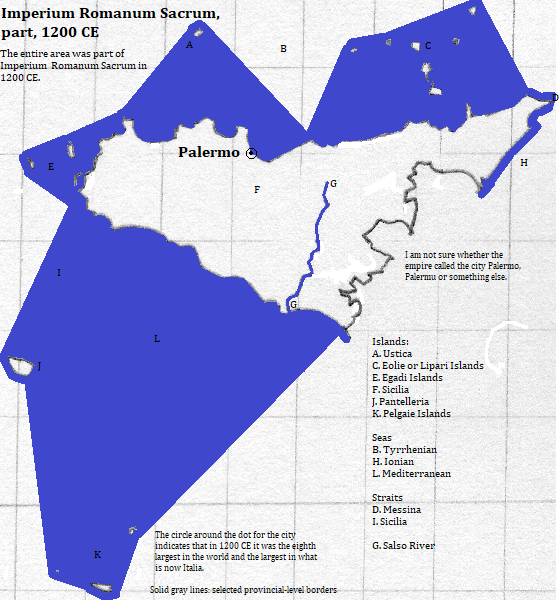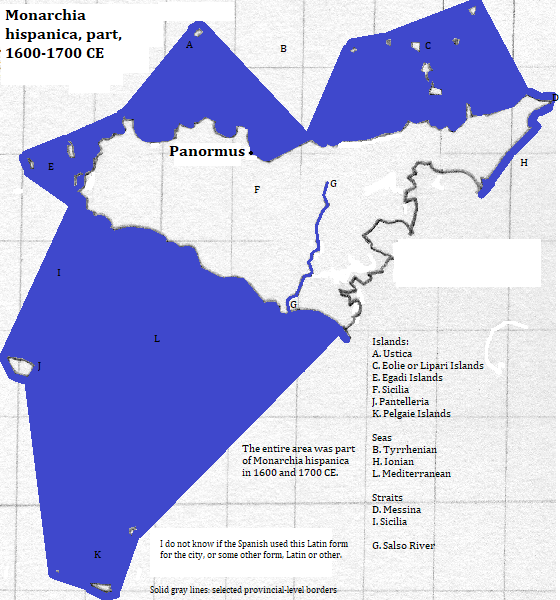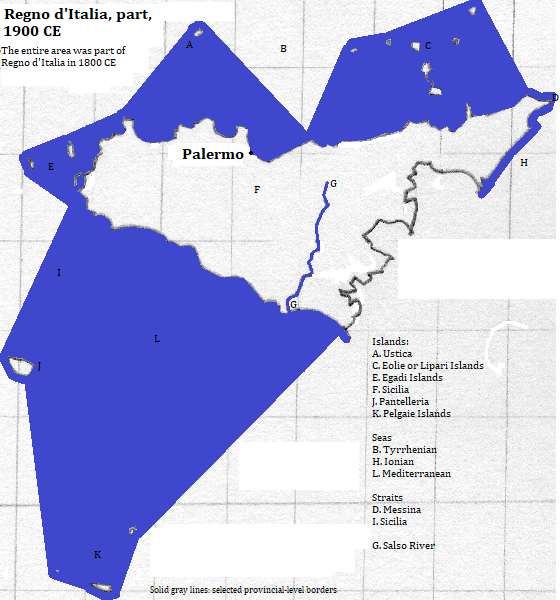
| To Duval Family Home Page | Europe |
| To Chris Home Page | Italia |
| To Earth (Geography Home Page) |
Palermo (locally called Palermu; Panormus in Latin) is a city of 702 thousand
The tallest conventional building is the Grattacielo Ina Assitalia (213 feet, 1955).
Its airport is one of the nation's busiest.
| Year | Population | Political entity |
| 1000 CE | 75,000 | ad-Dawlah al-Fātimiyyah (Fatimid Empire) |
| 1100 CE | 90,000 | Regnum Siciliae (Kingdom of Sicily) |
| 1200 CE | 150,000 | Imperium Romanum Sacrum (Holy Roman Empire) |
| 1300 CE | 35,000 | Regnum Siciliae (Kingdom of Sicily) |
| 1400 CE | 25,000 | Regnum Siciliae (Kingdom of Sicily) |
| 1500 CE | 39,000 | Monarchia hispanica (Spanish Empire) |
| 1600 CE | 105,000 | Monarchia hispanica (Spanish Empire) |
| 1700 CE | 125,000 | Monarchia hispanica (Spanish Empire) |
| 1800 CE | 135,000 | Sicilia ultra Faro in union with Sicilia citra Faro (Kingdom of Naples) |
| 1900 CE | 255,000 | Regno d'Italia (Kingdom of Italy) |
| 2014 CE | 1,277,000 | Repubblica Italiana (Italy) |





1. https://en.wikipedia.org/wiki/List_of_cities_in_Italy, accessed February 15, 2017.
2. 2014 figure from the side bar of https://en.wikipedia.org/wiki/Metropolitan_City_of_Palermo, accessed December 18, 2017.
3. Sicily in English.
4. Italy in English.
5. The Monte Pellegrino Mediumwave Transmitter, a wired mast, is 338 feet. Emporis.com, accessed December 18, 2017.
6. A duomo is a former or present Christian cathedral.
7. Side bar of https://en.wikipedia.org/wiki/Monreale, accessed February 15, 2017.
8. https://en.wikipedia.org/wiki/Arab-Norman_Palermo_and_the_Cathedral_Churches_of_Cefal%C3%B9_and_Monreale, accessed February, 2017.
9. https://en.wikipedia.org/wiki/List_of_the_busiest_airports_in_Italy, accessed February 16, 2017. My criterion for inclusion: above 3 million total passengers.
10. Tertius Chandler, Four Thousand Years of Urban Growth, 2nd ed. (The Edwin Mellen Press, 1987). Figures for 1000-1400 are from "Tables of the World's Largest Cities," and those from 1500 are from the 'Cities of Europe' tables. It was the eighth largest city in the world in 1200 CE and the largest in what is now Italia.
11. The kingdom was nominally part of the Corona d'Aragón (Aragon) but was de facto independent.